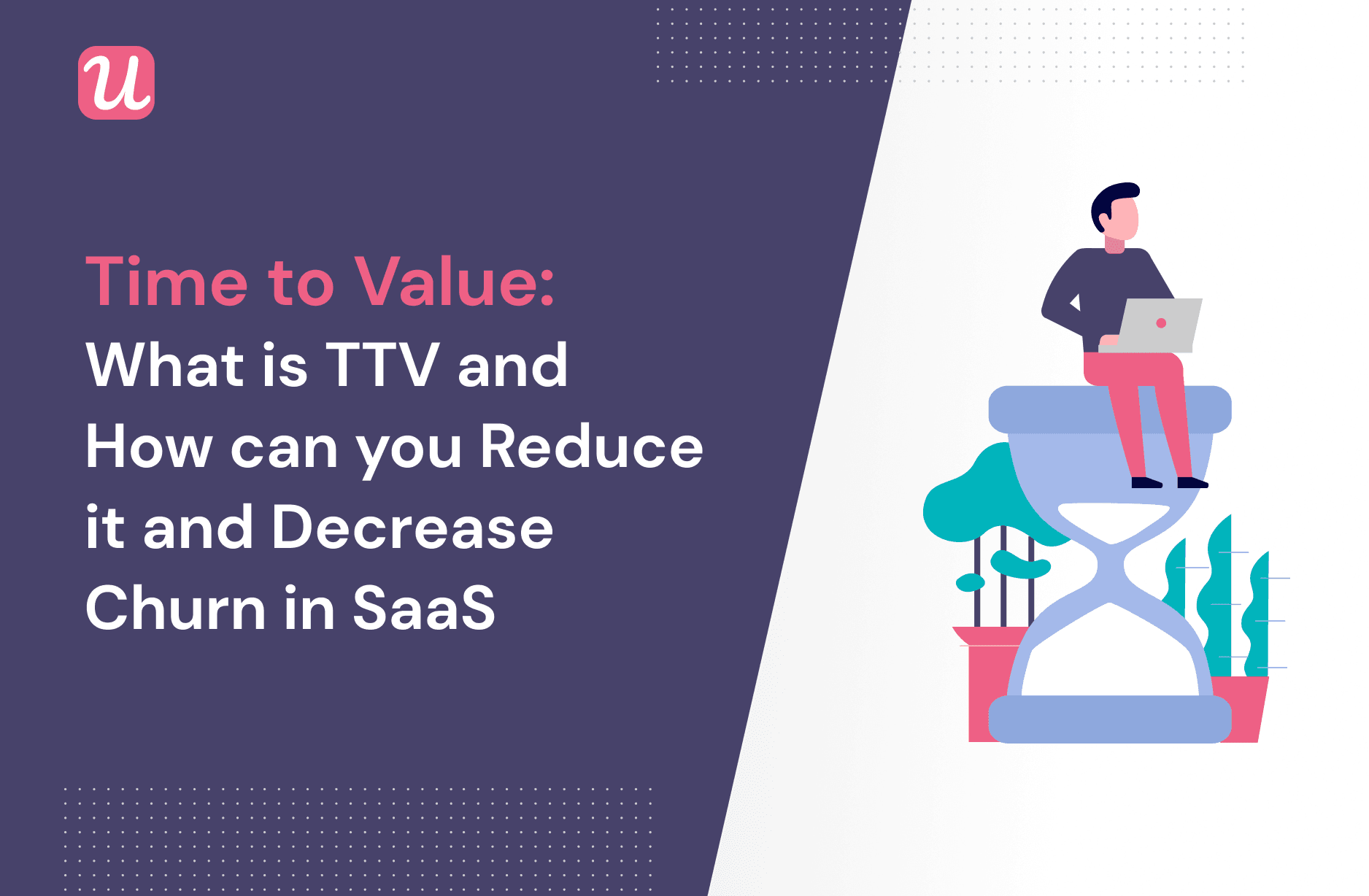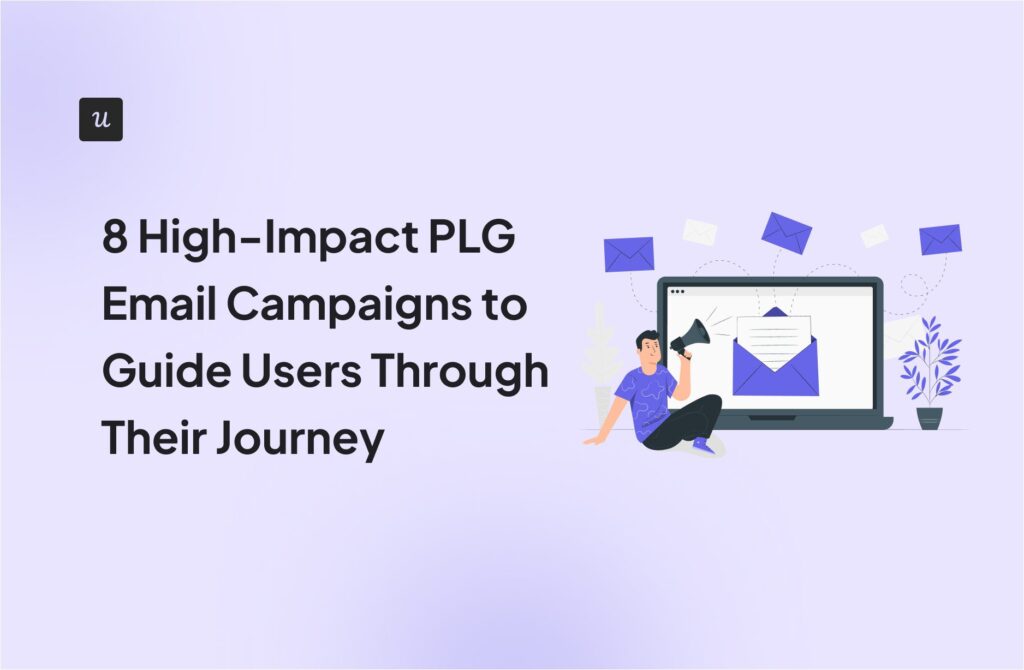
Get The Insights!
The fastest way to learn about Product Growth, Management & Trends.
What is Time to Value (TTV) in SaaS?
For SaaS products, Time to value (TTV) refers to the time it takes for a user to realize the expected value from your product.
Product teams strive to reduce TTV and help customers find the value from your product as fast as possible.
TTV is undoubtedly a crucial SaaS metric, as customers who pay for your product expect to start receiving its value right away. A longer TTV can thus lead to a drop in retention rates, i.e. an increase in churn.
The difference between TTV and the AHA! moment
It’s easy to confuse Time To Value with the AHA! moment.
Multiple types of TTV happen inside of products. Similarly, AHA! Moments also happen multiple times across the journey. But it’s usually the first one that’s the most important.
The first AHA! Moment makes the user want to try out your product, and it happens even before they step foot inside your product.
So how does it differ from TTV?
AHA! moments are feelings or ideas. These occur when users realize how the product can help them gain the value they expected.
Users have to also “experience” the AHA! moment and time to value is the measurement of how long it takes for the customer to experience the value of your product.
In short, the AHA! moment is when users first realize the value your product offers, and TTV is the time it took for them to reach the AHA! moment, and both happen multiple times across the user journey.

However, as we mentioned earlier, there is more than one type of TTV.
The main types of TTV metrics
Time to Value (TTV) isn’t the same for every SaaS product.
But there are some common types of TTV metrics that you should know. These include:
- Time to basic value
- Time to exceeded value
- Long time to value
- Short or immediate time to value
Time to basic value
Time to Basic Value (TTBV) refers to the time it takes for a new user to somewhat realize the value of your product in the early stage of using your product.
At this stage, the user not only starts receiving value but also gets interested to see exactly what value they can receive in the future.
For instance, you might offer some basic value of your product to free trial users. If TTBV is short, trial users receive value fast and become interested in going beyond the free trial and becoming paid customers.
Time to exceeded value
Time to Exceeded Value (TTEV) is the time it takes for a customer to go beyond the first AHA! moment and receive additional value from your product that they didn’t know they’d get.
As the name suggests, your product needs to exceed the expected value for you to measure TTEV, and this will be after experiencing the core value of your product. Usually, it’s an unexpectedly pleasant outcome, a faster time to get the job done than expected or similar.
This will act as a final nudge for trial users to become paid customers.
Long time to value
Long time to value is not easy to manage, no matter how well you know your product and customers. You’ll find more than one instance when a long TTV becomes unavoidable.
For example, if your product needs a lengthy onboarding process, it will lead to a long time to value. This can happen if it requires custom integrations or the time to produce results takes months, commonly experienced in enterprise software.
Short or immediate time to value
We’ve said it earlier: A shorter TTV is almost always good news for SaaS products.
Why “almost”, you ask?
Getting the value from your product in a very short time can lead to increased expectations.
Once customers get the initial value from your product quickly, you have to make sure they want more from your product. This also means that you have to deliver on your promises.
But one thing is undeniable – a shorter TTV, fuelled by brilliant first impressions, efficient onboarding, and excellent value can turn users into paying customers more quickly.
The benefits of reducing TTV in SaaS?
Once a customer signs up for your product, you’re not giving them any reason to get back to it unless they find an initial value from your product.
Not experiencing value will lead to a low trial to paid conversion rate, as the product failed to cater to user needs. Low conversion rates mean that users don’t advance on the user adoption journey, which results in no product adoption, and eventually low customer lifetime value.

This applies to existing users too.
If you cannot offer continuous value to your users, you’re not giving them any reason to renew their subscription. This causes your churn rates to go up.
While reducing TTV may offer some obvious benefits to your business, it also impacts the customer experience. You can improve the user experience greatly, reduce churn and drive customer success with tracking and reducing time to value.
A shorter time to value improves the customer experience
If you have a shorter TTV, it means that your users face low friction and get a smooth path to experiencing value.
Let’s face it, not a single customer success team wants to make the customer’s life harder. It’s the easiest path to sinking your business.
Your focus should be on reducing the TTV and delivering a great user experience. This will build product stickiness and drive word of mouth, helping you grow your SaaS business.

A shorter time to value drives customer success and reduces churn
The first impression is the best impression. While this might be true for your product, there’s more than just the first experience to solidify the adoption of your product.
A customer success manager needs to drive repeated value in all the phases of the customer journey.
This will help keep less friction, which ultimately leads to reduced churn. But even before trying to drive adoption, customer success managers need to have a product that actually delivers value.
Best practices
A bad experience with a product can cause a customer to immediately cancel a subscription, or not convert from a free trial and opt for a different product altogether.
Here are some best practices that can help you with a faster TTV:
- Empathize with your customers: understand what they want and find ways to solve their pain points most efficiently.
- Identify their needs and personalize their onboarding based on them: a personalized and contextual onboarding can help you reduce time to value.
- Constantly track data to identify and remove friction points in the journey that’s stopping users from getting value.
How do you reduce TTV?
While the previous section had some overall best practices for you to follow, here are some actionable tactics that can help you implement these practices.
1. Personalize the user onboarding process with welcome screens
The primary use of welcome screens is pretty self-explanatory – it helps you welcome new users.
It’s not just that.
Your welcome screen can also be used to personalize the onboarding experience for your users. Instead of using user testing assumptions, you can directly learn about users JTBD, role, and more and identify their use cases and needs using simple questions.
The next step is to build a personalized onboarding path based on these insights and offer an engaging onboarding experience for each use case using segmentation.
For mobile applications, you can also create mobile-first onboarding flows, customizing welcome screens, carousels, and slideouts to deliver personalized messaging.
Here’s an example of the popular email marketing platform ConvertKit’s welcome screen.

ConvertKit separates the newbies from the experienced by a simple welcome screen, which then shapes how it onboards the users on its platform.
If you pick the first option (moving from another tool), ConvertKit would ask you to select the platform you’re migrating from. It will then customize the next steps based on the import process of your previous platform and offer you a checklist guiding you to the advanced features of ConvertKit.

2. Set customer expectations right with empty states
An empty state can cause your users to stop engaging with your product right from the beginning.
When users see a blank screen, in most cases, they’ll do nothing. We humans, just freeze. That’s how we are designed and we need instruction on where to begin.
To avoid these situations, use personalized content that acts as a welcoming message and a demo of the product.
Todoist does this brilliantly. Here you can see how they demonstrate how their product works while offering instructions to users and delivering almost instant value.

3. Use customer onboarding checklists
Checklists are a great way to drive customers from one milestone to another.
For example, you can use customer onboarding checklists to drive them to the activation point in the journey where they get to experience first-time value.
You might want to focus on key tasks for your checklists. You can create multiple checklists for each milestone in the journey you want to drive the user to.
Here’s how Postfity uses onboarding checklists to guide users on a specific path to value, relevant for their use case.

4. Shorten the learning path for immediate time to value with interactive walkthroughs
While checklists give users a list of tasks to do, walkthroughs show them how to complete each of these tasks.
Pairing interactive walkthroughs with checklists is a great way to reduce time to value.
Interactive walkthroughs are a series of tooltips that guide the user step by step to using a feature for the first time. If done right, interactive walkthroughs improve onboarding by shortening the learning path and delivering value faster.
Here’s how Kommunicate, a chatbot tool, uses interactive walkthroughs to guide the user on building and personalizing their first chatbot.

Want to build interactive guides and shorten the time to value? Get a Userpilot demo and get started.
5. Improve your product with customer satisfaction surveys
In-app micro surveys are a great way to collect user feedback and gauge customer satisfaction.
Micro surveys help you collect quantitative and qualitative data that you can use to:
- Improve your product’s features and usability
- Discover and remove friction points
- Help customer success teams understand where users struggle
- Offer better customer support
For the best results, you can use different customer satisfaction surveys at different times of the user journey.
For example, once users have engaged with a new feature, you can have them answer a micro survey and gather feedback instantly to find out about their experience. Then use the insights to build walkthroughs or checklists or in-app guides where needed to reduce the time to value.

Conclusion
Finding ways to offer more value to your customers is not an easy thing to do.
Although SaaS products can vastly differ from each other, the principles behind TTV reducing tactics we covered in this post apply to products across industries.
Want to reduce the time to value by creating product experiences code-free? Get a Userpilot Demo today!





